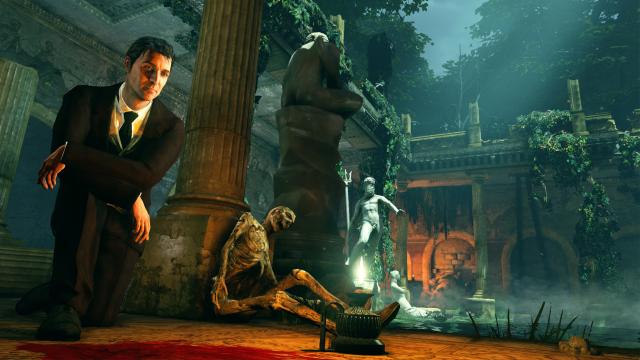I have a vice for mystery games. Since I first played The 7th Guest at a much-too-young age, I’ve loved solving virtual crimes and puzzles. Most of these games focus on the drive toward a correct solution. You have to get the puzzle right to proceed. I adore games such as Danganronpa and Phoenix Wright, but solving those murders correctly is an inevitability.
In a recent search for a mystery game to sate my sleuthing desire, I pulled up a game from my Steam backlog: 2014’s Sherlock Holmes: Crimes and Punishments. I’d heard good things about Frogware’s take on the detective before, and now I’m adoring the game’s willingness to let Sherlock – as in, me, the player – make the wrong call.
The game follows the same formula as any crime procedural. A murder is committed, and Sherlock and Watson are called in. You scan for clues, question witnesses, uncover secrets, and finally, determine whodunnit. This process is laid out by a deduction screen. Each clue Sherlock picks up gets added to a word cloud, and connecting them creates nodes, like neurons and synapses.
It’s logical, sound and reasonable. You can’t match a clue with something it shouldn’t match with. The resulting deductions can sometimes conflict, and that’s where the game gets you. Given only what you have, you have to make the call. Is this person honest or not? Was it luck, or did this murder require a degree of skill and strength? Logic only brings you so far; the rest is up to your discretion.
A case mid-way through the game forced me to decide whether I thought a murder weapon was made of silver or ice. There was a melted pool of silver in a nearby brazier, but there was water found in the victim’s blood. Ample reasoning for both schools. I had to choose, based on what I could determine from small bits and pieces, and go with that. The game wouldn’t stop me from accusing the wrong person. I could very well be sending an innocent man to prison, based solely off my hunches.
What happens if I point the finger at the wrong party? They get punished. Crimes and Punishments goes far enough to let you accuse the wrong person, only to have them shackled and carted off as if it were true. At the end of each chapter, the game gives you the option to find out if you made the correct call. Despite giving the player the option to condemn or grant some level of leniency, a culprit will always be made to pay for the crime.
It’s a different way of thinking entirely. Is Sherlock – am I – in a position to dole out these punishments and determine culprits when we are fallible? Is there a greater good to the justice being served? Crimes and Punishments forces me to hesitate, thinking through every possible scenario before I accuse. Even then, I can still easily overlook a clue or disregard a vital piece of the puzzle and condemn the wrong person. It’s a style of storytelling not possible in most linear mystery games, where the player is supposed to advance by being correct – here, in this game, I tell the system when I’m done and move on to the next case. The game will follow my whims accordingly, regardless of whether I’ve served true justice.
As much as I love the storytelling made possible by hard-locking the outcome of a murder trial, the free-flow nature of Crimes and Punishments has been liberating. It’s forcing me to take up the cap myself and see if I can really identify a murderer, rather than trust that the game will eventually sort it out with me.

Comments
One response to “I’m Enjoying A Mystery Game That Lets Me Get It Wrong”
This kind of thing was the best thing about L.A. Noire.
You didn’t know if you’d missed something or asked the wrong questions in some cases.